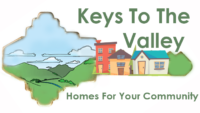MONTPELIER — Seniors in Vermont face some of the highest rates of financial insecurity in the nation, according to a report released by UMass Boston this month.
According to the report, 31% of seniors over age 65 who live alone and 43% of older couples don’t make enough income to meet the cost of basic needs, even though they are living above the federal poverty line
The report, which analyzed federal data on the costs of housing, health care, transportation, food and other goods in all 50 states, found that Vermont ranks highest in the nation for rates of economic insecurity for older couples and third for singles.
Elderly Vermont couples who rent need an annual income of $43,000 and singles who rent need about $30,000 a year to meet basic living expenses, according to the report.
Additional data shows couples in Vermont that own a home without a mortgage should have an annual income of about $41,000, which is 130% higher than the national average.
Jan Mutchler, a professor of gerontology at UMass Boston and the author of the report, said the higher costs of health care and housing in Vermont are part of what makes it difficult for seniors to afford living in the state.
“The costs are definitely driving a lot of what you see in Vermont,” Mutchler said. “The people in Vermont probably have more retirement income on average than Mississippi or Alabama. But because their cost of living is so high, it just doesn’t go as far.”
Mutchler’s analysis found health care expenses in Vermont are the highest in the country for seniors.
On average, she found that with the cost of Medicare, supplemental health plans, co-payments, and drug costs, Vermont seniors typically spend $586 a month on health care. The U.S. average is $395 per month.
A small portion of seniors in the state fall below the federal poverty level, which for a single person is an annual income of $12,500, and about $17,000 for a family of two.
Among seniors who live alone in Vermont, 15% have incomes below this poverty level. Only 4% of elderly couples have incomes below the federal poverty line.
Angela Smith-Dieng, the director of the State Unit on Aging at the Vermont Department of Disabilities, Aging and Independent Living, said she was struck by how the study highlighted the seniors who are above the poverty line “but still in that gap where they’re struggling to meet the cost of living in our state.”
“Typically there’s so much focus on reducing poverty and when we only look at poverty levels, we’re missing a lot of folks who are living above that threshold but still struggling,” Smith-Dieng said.
Greg Marchildon, the state director of the Vermont AARP, said many Vermonters live on Social Security benefits, which haven’t increased significantly at the federal level in several years, despite rising costs of living.
He said the issue of financially instability among seniors is particularly pressing because the state’s aging population is expanding. Two-thirds of the state’s residents are now middle-aged or older.
Marchildon noted that the fastest growing segment of Vermont’s population is those who are 82 and older.
“People talk about the age boom like it’s this thing that’s coming our way,” he said. “Well, in Vermont, it has arrived.”
Marchildon said that to address the problem, officials at the federal level should increase retirement benefits and help curb the rising costs of drug prices.
At the state level, he says Vermont needs to invest more in affordable housing for seniors, and should completely eliminate the tax on Social Security benefits.
Vermont is one of only four states that tax Social Security benefits. In 2018, officials partially slashed the levy, giving 40,000 seniors on Social Security $5 million to $8 million of tax relief. Marchildon said now lawmakers and the governor should act to jettison the tax entirely.
He also said that Vermont companies need to do a better job offering substantive retirement plans, and be open to hiring more seniors as part-time workers.
“It’s not just about government doing everything here, the for-profit sector of our country and our state needs to step up too,” he said.
Sen. Ginny Lyons, D-Chittenden, the chair of the Senate Health and Welfare Committee, said that while the state has made recent investments in expanding care programs for elderly Vermonters, it has been difficult to address senior citizens’ financial security.
“We haven’t solved the problem of making ends meet,” she said. “And it’s a huge challenge because we don’t have the clout to change Social Security and change Medicare at a rate that is appropriate.”
“We don’t have the ability to build and increase money for these people to use to pay for all the services and the goods that they have,” she said.
Lyons said that lawmakers should work with Vermont’s congressional delegation to boost funding for federal benefits programs for the elderly and subsidies to expand housing for seniors, and should prioritize funding for the Vermont Housing and Conservation Board for the same purpose.
Smith-Dieng, of Disabilities, Aging and Independent Living, said that there are also ways to make life for seniors more affordable at the local level.
She pointed to the Mount Mansfield Villages, a non-profit that operates in the towns of Jericho, Underhill, Cambridge that launched in October.
The organization provides seniors in the area with services including transportation, home repairs, cleaning and technology assistance at a low cost.
“Certainly there are solutions that we need at the federal level, at the state level,” she said. “But there are also great solutions cropping up at the local level from community.”

